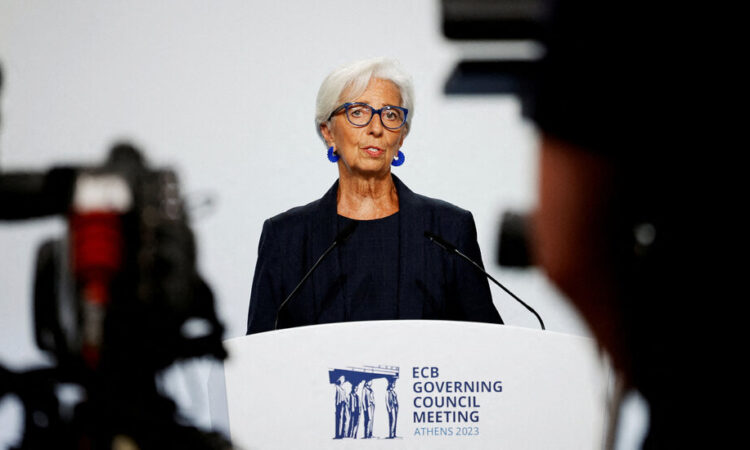
The European Central Bank on Thursday held interest rates steady for a second consecutive meeting, cementing the impression that rates have reached a peak in the bank’s effort to squash high inflation, but said rate cuts had not been discussed.
Officials kept the deposit rate, one of the central bank’s three key rates for the 20 countries that use the euro, at 4 percent, the highest in the institution’s two-decade history. The other two rates were also left unchanged.
Inflation in the eurozone slowed to 2.4 percent in November, the lowest in two years, easing faster than economists expected. That’s closing in on the European Central Bank’s 2 percent inflation target as energy prices have dropped over the past year and food inflation has slowed. The bank said that inflation was likely to rise again in the short term before easing again, more slowly than previously predicted, and reach the target in 2025.
To ensure inflation returns to that target sustainably, policymakers have been watching other measures that gauge price pressures, and these have also softened. Core inflation, which strips out food and energy prices, was at 3.6 percent, down from a peak of 5.7 percent in March.
As price pressures in the bloc ease, policymakers at the European Central Bank, like central bankers in other major economies, are trying to convince investors that they will not cut interest rates too soon, before they are certain that the risk of a prolonged period of high inflation has abated. But traders are expecting the European Central Bank to cut rates in the first half of next year, potentially as soon as April, as the region’s economy sputters.
Christine Lagarde, the president of the bank, said the Governing Council had not even talked about rate cuts at this week’s policy meeting. “No discussion, no debate on this issue,” she said at a news conference in Frankfurt.
She highlighted the bank’s forecast that inflation would be 2.1 percent in 2025, a little above the target. And she noted that wage costs, another source of inflationary pressure, were still rising significantly.
“Should we lower our guard?” Ms. Lagarde said. “No, we should absolutely not lower our guard.”
Economic growth has practically been at a standstill over the last year, and some policymakers and analysts remain concerned that monetary policy is too restrictive and could cause unnecessary economic pain.
But rates were at levels, if maintained for a “sufficiently long duration,” that would bring inflation toward the target.
“Our future decisions will ensure that its policy rates will be set at sufficiently restrictive levels for as long as necessary,” Ms. Lagarde said.
Earlier on Thursday, the Bank of England held interest rates at a 15-year high and gave no signal that rates would be lowered anytime soon. On Wednesday, the U.S. Federal Reserve left rates unchanged but indicated that rates might be cut three times next year.
The European Central Bank said high rates were having an effect on the eurozone economy. By some measures, the impact was stronger than expected, such as on weakening demand for business and household loans. The impact is expected to grow as the economy sputters, prompting expectations of a rate cut.
Staff at the central bank said the economic growth would remain “subdued” in the short term. The bloc’s economy will grow by 0.8 percent next year, the bank forecast, lower than the previous forecast three months ago.





